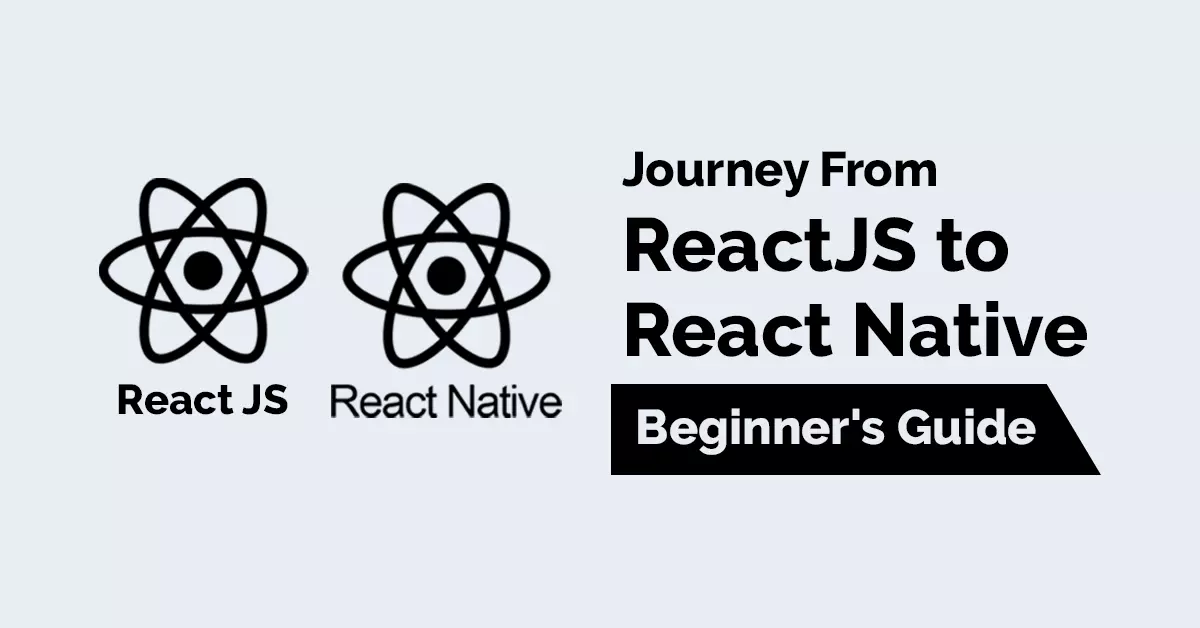Journey From ReactJS to React Native: Beginner’s Guide

I was excited to create my first React Native app, drawing from my experience as a ReactJS developer. Over the past month, I’ve been working on building a cross-platform React Native app that provides detailed information about RC.
As the app nears completion, I wanted to share my journey and the insights I’ve gained as a junior developer. Initially, I faced numerous challenges due to my lack of experience with React Native. It took some time to grasp the differences between React Native and ReactJS, despite the many similarities in design patterns.
I’ve compiled a summary of the challenges I faced as a developer this year as I transitioned from ReactJS to React-Native. I hope this might assist others just starting on their journey towards reactjs dvelopment.
The Difference Between ReactJS and React Native
React Native is a framework for building cross-platform applications, whereas ReactJS is a JavaScript library. While React is an open-source JS library for building UIs for web applications; besides, React Native is used to build rich mobile UI from declarative components using JavaScript.

React JS Utilises Virtual DOM While React Native Uses Native APIs
Apps don’t have a browser window or DOM. Although it may seem apparent, if you haven’t considered it previously, it will significantly alter the npm/yarn components that you may use in your app. There is no DOM in React Native. As a result, any component created in a manner that necessitates a DOM will not function at all in React-Native.
ReactJS
Makes use of the virtual DOM to improve user experience. Due to the size of today’s DOM trees, the DOM creation takes time. However, ReactJS accelerates this process by making use of a virtual DOM. In order to implement changes to one component without affecting the other components of the user interface, ReactJS makes use of an abstract duplicate of the Document Object Model. This is what makes ReactJS so great at generating changes quickly and producing dynamic user interfaces.
React Native
Went one step further with this. It renders reusable UI components that may be used on both iOS and Android devices by utilizing native APIs. In reality, it uses Objective-C APIs to create iOS components and Java APIs to render Android components. The remaining code is then written using JavaScript, customising the program for each platform.
While React Native’s code may be integrated with any Existing App, ReactJS Combines Technologies
React Native does not use HTML or CSS, but ReactJS does. React Native implies <text> and <view> whereas ReactJS utilizes <p> and <div>. As an illustration, consider the following:
For ReactJs
function MyApp() {
const element = (
<div>
<p>Hello, world!</p>
</div>
);
ReactDOM.render(element, document.getElementById('root'));
}
setInterval(tick, 1000);For React Native
import React, { Component } from 'react';
import { Text, View } from 'react-native';
export default class HelloWorldApp extends Component {
render() {
return (
<View>
<Text>Hello world!</Text>
</View>
);
}
}Navigation – A Different Approach for ReactJS and React Native
Although they each take a different approach from this viewpoint, the results are very close. ReactJS web apps use React-router but React Native uses a whole other package called Navigator for this purpose.
You need to be aware of the react-router-library, which provides navigation on click events, if you’re creating an application using ReactJs. Use the useHistory hook in the framework to gain access to the history instance when React Router v5 was released.
If you hadn’t thought of it before, even though it might seem obvious, it will substantially change the npm/yarn components that you might utilise in your project. In React Native, there is no DOM. Therefore, any component made in a way that requires a DOM won’t work at all with React-Native.
Favourable to Search Engines
ReactJs
You must take SEO into consideration while you create your ReactJS application. ReactJS technology’s main objective is to provide a user interface that is simple to use and dynamically changes based on human input.
In reality, though, the Google bot is not a person. Therefore, in order for the Google bot to find our app, we must appropriately index our web page.
React JS provides a number of tools and packages that may help you optimise your project for SEO.
React Native
React Native has nothing to do with SEO when it comes to our consideration. How we (react native developers) create native UIs is up to us.
Which of React or React Native is Better to Learn?
You should now have a better understanding of their siblings, ReactJS to React Native. As far as the platforms for the finished products go, they differ, but when it comes to the React Native development process, they are comparable.
Actually, learning another framework will be simpler if you master the React or React Native frameworks. However, you need to be familiar with React to create a React Native application. But things don’t stop there! More native apps need to be understood in depth because React Native only provides a limited amount of support for them.





